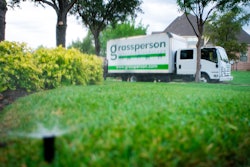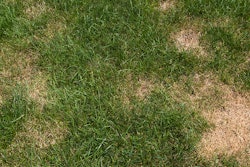
While your clients might lather on sunscreen to protect their skin from the sun's rays, their lawns can't exactly escape the sun. But many people are surprised to learn that their lawn can get sunburnt or "sun-scorched," as it is often called.
Here are a few tips on how to deal with sunburnt grass.
What does sun-scorched grass look like?
According to Joshua Malik, owner of Joshua Tree Experts in Pennsylvania, sunburnt grass typically looks yellow or brown. Lawn areas on a hill and those that are heavily compacted are the most likely to experience scorching. That's because these areas tend to already be dry.
"If the ground is sloped, the water may run off before it is fully absorbed by the roots," Malik explains. "With lots of sun exposure and a lack of water, the lawn can become scorched."
What to do about sunburnt grass
As a lawn care professional, you can take steps to help prevent sunburnt grass in the first place. An important step, says Malik, is to alleviate compaction with a lawn aeration service. Lawn aeration will help to loosen the soil and allow more water to be absorbed at the root zone.
You should also educate your clients about proper watering, suggests Malik. Oftentimes, homeowners don't know how much water their lawn needs. Turf can only survive a couple of weeks of drought stress before they die. Lawns typically need around one to two inches of water per week. But your clients may be underestimating how much they apply (or how much it has rained).
Suggest a rain gauge so that clients can see exactly how much water Mother Nature is putting down and then they can supplement the rest.
Malik says that clients might also need recommendations for proper mowing as mowing the grass too short can leave a lawn prone to getting sun-scorched. Share the proper mowing height for the predominant type of grass that your clients have on their lawn.
"They should also only mow one-third of the grass at a time," Malik adds.' Although it's more work, they need to mow more frequently if it means cutting less of the grass."
Will sunburnt grass grow back?
Your clients will also want to know if their lawn will return. The answer, says Malik, depends upon the severity. If the grass has not actually died, it can bounce back from a scorching. But a lawn that has died will need to be restored with aeration and overseeding or even sodding.
If a client's lawn has truly died from sun-scorching and drought stress, this could be an opportunity to suggest a new grass variety that might better withstand the environmental conditions.
"Restoring a lawn is not an overnight process so clients will need to have patience," Malik says. "However, as a lawn care professional, you can guide them and help encourage better practices going forward."











